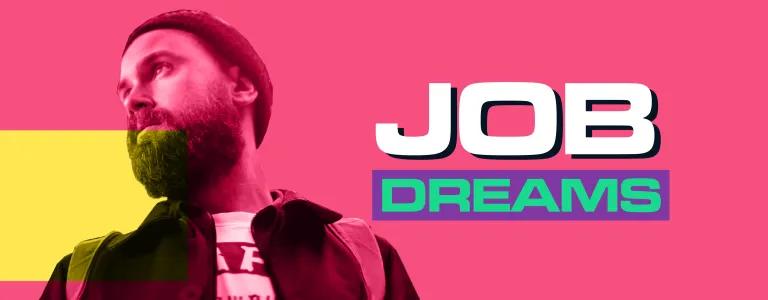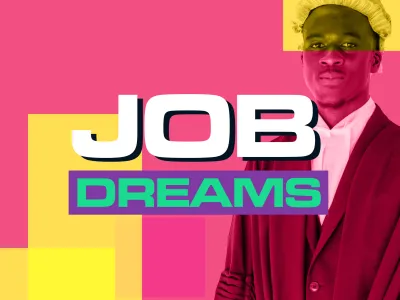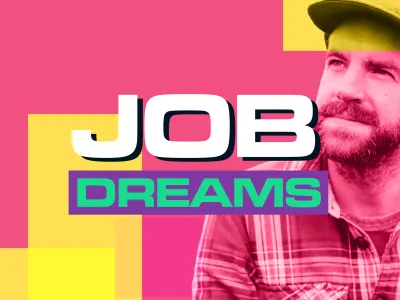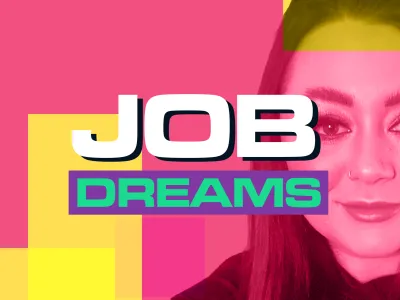
Job Dreams: Creative Director
As part of our Job Dreams series, we speak to professionals from different careers and share their advice with you. Last month, we learned what it's like to be a Divisional Policy Lead. This month, we met Gabriel, who told us all about what it’s like to be a Creative Director!

What do you do?
This is a tricky one to narrow down, and sometimes changes from day to day, but primarily I am a freelance creative director or an art director (depending on the job) working predominantly in the fashion, luxury and lifestyle industries. I am also a photographer and graphic designer.
Can you tell us what your day-to-day is like?
My day-to-day differs wildly depending on what stage of a project I’m on, so I think it will be easier to describe the stages themselves.
First is the briefing stage – I will receive a brief from a client (either directly or as part of an agency). I will then read the brief and respond with any questions and challenge it if I think it has holes in it. This is usually done in conjunction with the account management team.
Once the brief is clear, and the end goals are established, we dissect both the brief and the brand, learn about the target audience and the marketplace/competitors and devise a strategy for how the brand can stand out. This is usually done in conjunction with a strategy team.
Once the strategy has been signed off, the fun stuff begins and we start looking at different creative executions and how we can use art direction (branding, photography, film, graphic design, illustration etc.) to make the brand feel different and more impactful than everything else. We then look at how best we can promote that brand and reach their customers through marketing (outdoor advertising, TV advertising, print, social media, events etc).
Once the creative concept and approach is signed off, we go into pre-production. This is where we start making the creative come to life. We put together a team of directors, photographers, stylists, hair and make-up artists, models/talent etc. and collaborate to produce a shoot where we create all the assets we’ll need for the entire campaign, across all the different channels.
When the shoot is done we go into post-production, which is where everything comes together. The film content gets edited, graded and sound mixed. The photos get selected, retouched and placed into layouts. And then everything gets delivered to the client in all the formats they need, usually with a media plan so they know when and where to post everything!
So, in summary, the day-to-day depends on which part of the process I’m at. I can spend days researching images or films for moodboard references that help sell the concept into the clients. I can be building presentation decks. I can be researching photographers and directors. I can be having lots of client meetings. I can be spinning multiple plates at once as I am the main port of call for everyone on the project, and I have to be aware of what’s going on at all times.
What do you love most about your job?
Being on set! Especially pre-COVID when there was a lot of travel involved. I used to love being able to travel to shoots in different countries. But even without that, the thrill of watching something you’ve been working on for weeks or months coming together is amazing, especially when you get to work with lots of other like-minded creative people. When the energy is good on set, it’s the best feeling ever.
What do you find most challenging?
The most challenging part of the job is keeping everyone happy. Especially as a freelancer. You have to keep the client happy, which can be tricky as they often aren’t particularly creative, so it’s sometimes hard for them to understand your vision, so you have to make it super clear, which usually means days and days of image/film research to basically show them the outcome of the campaign before you even shoot it.
The other thing is work/life balance, especially since COVID but even before. With a creative job, you never reaaaaally switch off, because inspiration can come from anywhere. I even sometimes find myself working in my sleep if I have a particularly difficult problem to solve!

What did you see yourself doing when you were a kid?
I always knew I wanted to do something creative. I spent the majority of my childhood playing with paint and clay, always making and drawing. But I didn’t know that there was any career path apart from just ‘artist’, although I did watch a lot of Art Attack in the ‘90s and thought that artist/entertainer could be a vibe.
I studied art as a subject for most of my young life, but actually got better grades in essay subjects (that my folks approved of) like English, history and psychology. When I finished my A Levels and had to choose what to study at uni, most of my family wanted me to do something academic like they all did. I wanted to do something creative, but worried that there wouldn’t be any jobs and that I’d just be a struggling artist. My aunt introduced me to the concept of an art foundation – a pre-uni, year-long, state-funded, diagnostic further education course where you get to try your hand at all the major creative vocational avenues: fine art, sculpture, graphic design, illustration, fashion & textiles and photography. Turns out I loved all of them, especially photography, but I chose graphic design as my specialism as it essentially combined all of them in different ways. I then went on to study graphic design at university, and my early graphic design career naturally morphed into art direction due to my passion for photography and film.
What challenges did you face in reaching where you are today?
Relatively few, if I’m honest. I’m very aware of my privilege as a white, straight male, from a middle class family. But, I worked hard at uni to get a 1st class honours., I was then able to exhibit my final year degree work in a prestigious gallery with my fellow students, was spotted by the head of creative at Topshop, and my life as a graphic designer/art director began and hasn’t really stopped. I think the hardest part is getting that first foot in the door, but once you’re in, you’re usually in. It’s important to work hard, meet lots of people and be nice to all of them. It’s a small industry and personality is just as important as your portfolio.
If you weren’t working in this field, what do you think you’d be?
I love photography and do it as much as I can as a hobby, and would love to be able to do it as a full-time thing. But if I was to change industry completely, I always had dreams of working with animals and/or conservation.
Where do you see yourself going next?
I’m trying to push my photography further, as I believe there is a niche to having a photographer who also has experience as an art director, as I could be the best of both worlds for a client. However I am getting quite depressed with the state of the fashion industry, in particular ethical and environmental concerns, so I would like to start working more with sustainable and positive brands that want to make a difference.
What do you know now that you wish you’d known when you first left school?
I wish I was taught more about basic adult life essentials; banking, taxes, running a business etc.
What advice would you give to someone interested in joining your industry?
Work hard and be nice to people. Surround yourself with people who inspire you. Your portfolio is more important than your grades – always do the best work you can that you feel reflects you. No one will ever ask your grade in an interview in the art world, they want the work to speak for itself.
What’s the best piece of professional advice you’ve been given?
Trust your gut instincts. As a creative you will always find yourself (and other people) second guessing your decisions but if you don’t have confidence in your work and your opinions then you won’t get very far.
What quote do you live by?
YOLO. Sounds lame but actually, we do only have a short time on this planet so you need to spend it doing what makes you happy as much as possible ☺





